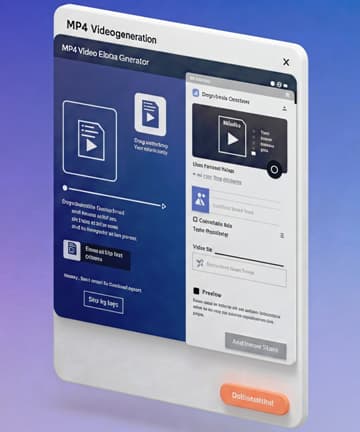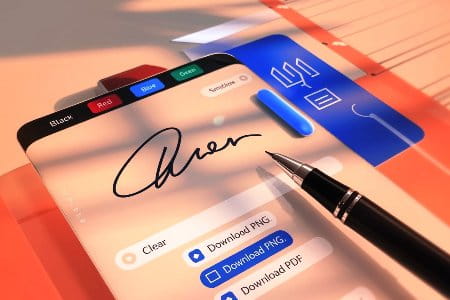Professional Resume Builder Free Tool
Personal Details
Professional Summary
Work Experience
Education
Skills
Your Generated Resume (Copy & Paste)
Your Job Search Just Got a Whole Lot Simpler: Create a Professional Resume Right Here, for Free
Let's face it. Creating a resume is a pain.
You know you need to have one. An awesome one. But navigating the process is daunting. You sit in front of a blank page, trying to recall what you did last year. You hunt down templates, only to discover they collapse when you attempt to insert an additional line.
Then you come across the professional resume online builders. They seem so nice. They make everything sound like the world will be its oyster. But once you've spent 30 minutes typing in every last detail of your professional life, you click the "download" button to be confronted with a paywall. Or forced sign-up. It is infuriating.
I think career tools should be available. Easy. Without frustrating strings.
That's why I created the easy-to-use, professional resume maker you see here. It's here in this blog post. No gimmicks. No pop-ups. A simple, straightforward tool to put your qualifications on paper so you can get on with your job hunt.
Go ahead, complete it. Then, continue reading. Why? Because a tool is only as good as the data you feed it. I'm going to guide you through, step by step, how to transform your experience into a resume that delivers.
Consider This Tool Your Foundation
This builder produces plain, unstyled text. Why? Intentionally.
Most companies have Applicant Tracking Systems (ATS) installed. These are computer programs that sift through your resume looking for keywords before a human even has a chance to see it. Exotic columns, pictures, and strange fonts will mislead these systems into rejecting your application automatically.
Plain text is ATS-friendly. It's the ideal starting point. Employ this tool to create the base content, copy it, and then paste it into a plain Google Doc or Word doc for ultimate formatting and PDF export.
Now, let's write that content.
Section 1: Your Headline (Personal Details & Professional Title)
This is the very first thing a recruiter lays eyes on. It must be crisp and professional.
Full Name: Easy enough.
Professional Title: This is important. Don't put "Seeking new opportunities." Put what you are or would like to be. Be specific. "Content Strategist," "Registered Nurse," or "Junior Web Developer" are great. This immediately informs the recruiter about who you are and where you stand.
Contact Info: Your email should be professional (firstname.lastname@email.com is ideal). Put in your phone number and your LinkedIn URL. A full LinkedIn profile is not an option in today's market.
Section 2: The Professional Summary
Consider this your 30-second elevator pitch. It's a replacement for the now-outdated "Objective" section. A hiring manager should be able to scan these 2-4 sentences and have a clear idea of what value you are.
A weak summary is a job description listing: "Responsible for marketing campaigns and social media."
A good summary focuses on accomplishments and incorporates key words: "Data-driven Marketing Manager with more than 8 years of experience managing campaigns that have grown lead generation by 40%. B2B tech industry expertise in SEO, PPC, and content strategy."
Notice the difference? One is passive, the other is active and full of value. Read over the job description you are applying for. What are their essential requirements? Incorporate those words into your summary.
Section 3: The Heart of Your Resume (Work Experience)
This is where you demonstrate that you can get the job done. Don't list tasks. Anyone can list tasks. You must indicate your impact.
The best way to do this is using action verbs and measurable results.
Instead of:
- Responsible for the company blog.
Try:
- Managed the company blog, publishing 3 articles per week that increased organic traffic by 150% in a year.
Instead of:
- Assisted with customer support.
Attempt:
Resolved 30+ customer tickets per day, with a 95% customer satisfaction rate.
Numbers are your friend. They give you concrete proof of your accomplishments. Search back through old reports, emails, or performance reviews to discover them. How much did you save? By what percentage did you gain efficiency? How many individuals did you train?
Also, don't forget to put your experience in reverse chronological order—your current position first.
Section 4: Your Foundation (Education)
Keep this part short and sweet. If you've got years of experience, your education is not as significant. Just list your:
- Degree and Major
- University and Location
- Graduation Date (If it was within the last 5-10 years. If it's longer than that, omit the year.)
If you have little work experience, such as if you're a recent graduate, this section can be lengthier. You can mention items like a high GPA (3.5 or higher), related coursework, or academic honors.
Section 5: The Clincher (Skills)
This one is ideal for ATS scanning. It's where you can enumerate all the applicable keywords that may not have occurred to you to include in your experience section.
Break it up into categories to make it easy to read. For instance:
- Technical Skills: Python, JavaScript, Google Analytics, Salesforce, Adobe Creative Suite
- Languages: Spanish (Fluent), French (Conversational)
- Certifications: PMP Certification, Google Ads Certified
Take a final look at the job description. Does it refer to particular software or methodologies? If you possess that skill, add it here. Customize this section for each and every application.
You've Built It. Now What?
As soon as you click that "Generate My Resume" button, you'll have a tidy, well-organized text document. The worst part is done.
- Cut and paste the whole lot.
- Paste it into a new Google Doc or Word doc.
- Double-check one last time. Read it out loud to notice typos and clunky phrasing. Use something like Grammarly. One little typo can be a deal-breaker.
- Keep it simple and neat with clean, professional type font such as Arial, Calibri, or Helvetica. Use bolding for your name and for job titles. Keep your margins nice and standard (about 1 inch).
- Save in a PDF. Always send your resume as a PDF file unless the application request explicitly a Word document. A PDF maintains your formatting exactly on every type of device. Name the file professionally, such as JaneDoe-Resume.pdf.
A great resume is your ticket to an interview. It's a sales piece, and you are the product. Invest the time to make it sparkle.
This tool exists to take the initial friction away. To give you a solid, professional starting point. Now go get that job. Good luck.

.jpg)



